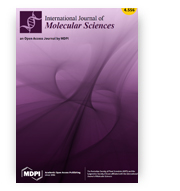The Effect of Xanthohumol Derivatives on Apoptosis Induction in Canine Lymphoma and Leukemia Cell Lines
Małgorzata Grudzień; Aleksandra Pawlak; Tomasz Tronina; Kutkowska Justyna; Angelika Kruszyńska; Jarosław Popłoński; Ewa Huszcza; Andrzej Rapak
International Journal of Molecular Sciences
Ministerial score = 140.0
Journal Impact Factor (2023) = 5.6 (Q1)
 Xanthohumol is a cancer chemopreventive agent that can interfere with the initiation, promotion, and progression phase of carcinogenesis via a variety of inhibitory mechanisms. Xanthohumol was reported as an effective agent against leukemia/lymphoma cells. In the present study, we investigated the effect of xanthohumol and its natural and semisynthetic derivatives against various canine leukemia/lymphoma cell lines. Xanthohumol, three hops minor prenylflavonoids (xanthohumol C, xanthohumol D, α,β-dihydroxanthohumol) and four derivatives obtained by biotransformation (xanthohumol 4′-O-β-D-(4‴-O-methyl)-glucopyranoside) as well as by chemical modification (1″,2″-dihydroxanthohumol K, 2,3-dehydroisoxanthohumol, (Z)-6,4′-dihydroxy-4-methoxy-7-prenylaurone) were tested for their antiproliferative and pro-apoptotic activities against the following canine leukemia/lymphoma cell lines: CLBL-1 (B-cell lymphoma), CLB70 (B-cell leukemia), and GL-1 (B-cell leukemia). The compounds were tested at a final concentration range of 0.1–30 µM for 48 h. All eight of the tested flavonoids exerted concentration-dependent cytotoxicity in the selected canine lymphoma/leukemia cell lines. Three compounds markedly decreased the viability of all cell lines with IC50 in the range of 0.5 to 8 μM. Double-staining of the treated cells with AnnexinV and propidium iodide revealed that the dying cells were mostly in the late apoptosis stage. ROS production and changes in mitochondrial potential were detected. Western blot analysis showed a decreased expression of Bcl-2. Canine lymphoma and leukemia cell lines are sensitive to xanthohumol derivatives, and the compounds acted through an apoptotic cell-death mechanism. These compounds, either used alone or in combination with other therapies, may be useful for the treatment of canine leukemia/lymphoma.
Xanthohumol is a cancer chemopreventive agent that can interfere with the initiation, promotion, and progression phase of carcinogenesis via a variety of inhibitory mechanisms. Xanthohumol was reported as an effective agent against leukemia/lymphoma cells. In the present study, we investigated the effect of xanthohumol and its natural and semisynthetic derivatives against various canine leukemia/lymphoma cell lines. Xanthohumol, three hops minor prenylflavonoids (xanthohumol C, xanthohumol D, α,β-dihydroxanthohumol) and four derivatives obtained by biotransformation (xanthohumol 4′-O-β-D-(4‴-O-methyl)-glucopyranoside) as well as by chemical modification (1″,2″-dihydroxanthohumol K, 2,3-dehydroisoxanthohumol, (Z)-6,4′-dihydroxy-4-methoxy-7-prenylaurone) were tested for their antiproliferative and pro-apoptotic activities against the following canine leukemia/lymphoma cell lines: CLBL-1 (B-cell lymphoma), CLB70 (B-cell leukemia), and GL-1 (B-cell leukemia). The compounds were tested at a final concentration range of 0.1–30 µM for 48 h. All eight of the tested flavonoids exerted concentration-dependent cytotoxicity in the selected canine lymphoma/leukemia cell lines. Three compounds markedly decreased the viability of all cell lines with IC50 in the range of 0.5 to 8 μM. Double-staining of the treated cells with AnnexinV and propidium iodide revealed that the dying cells were mostly in the late apoptosis stage. ROS production and changes in mitochondrial potential were detected. Western blot analysis showed a decreased expression of Bcl-2. Canine lymphoma and leukemia cell lines are sensitive to xanthohumol derivatives, and the compounds acted through an apoptotic cell-death mechanism. These compounds, either used alone or in combination with other therapies, may be useful for the treatment of canine leukemia/lymphoma.
DOI:10.3390/ijms241411724









